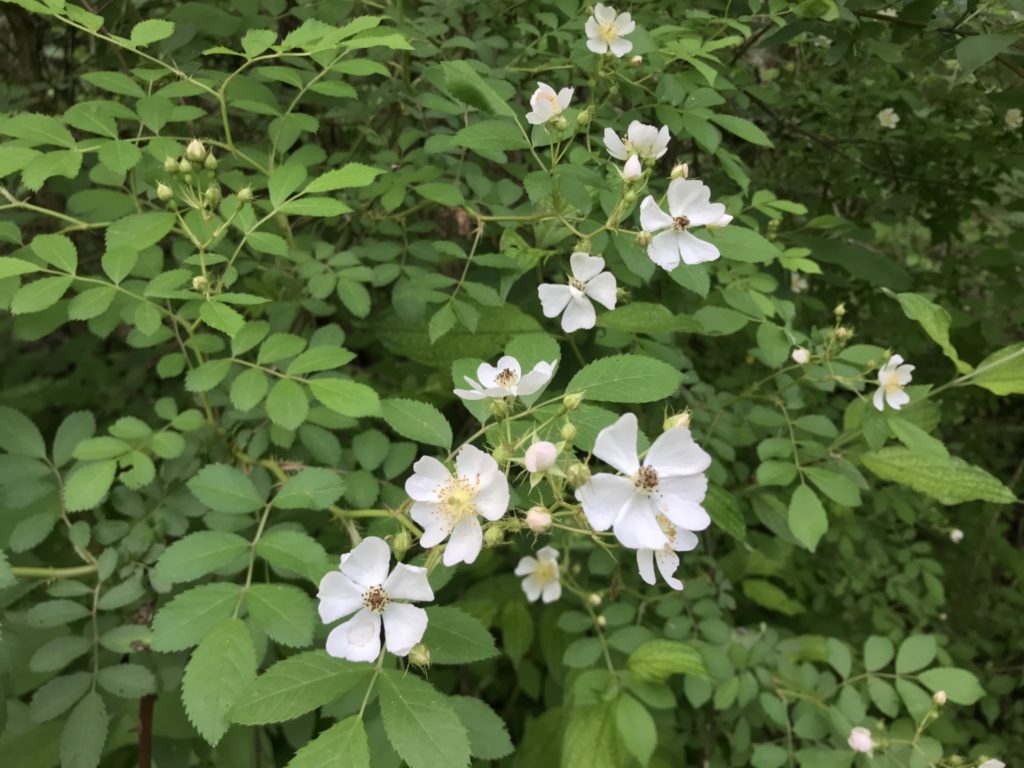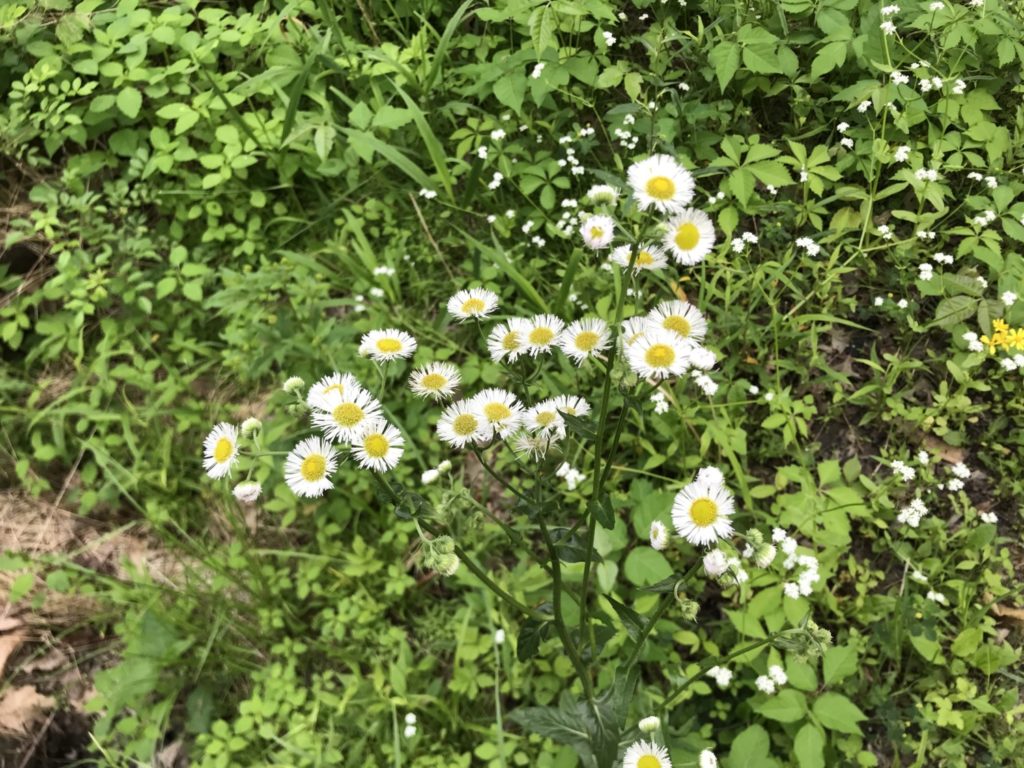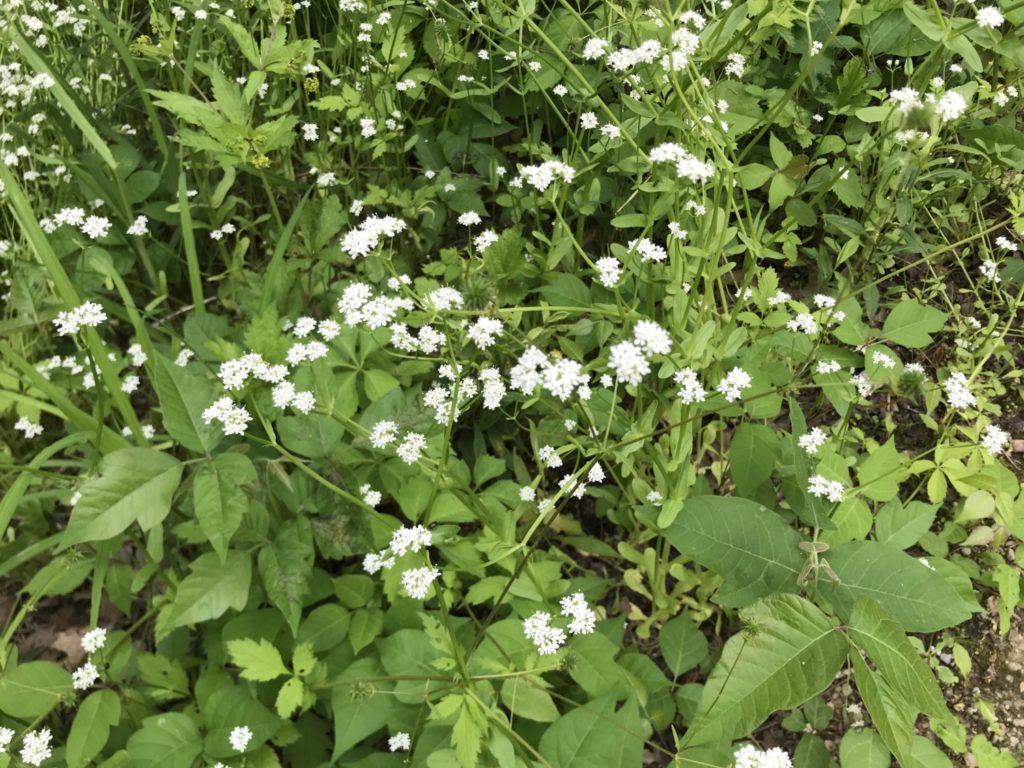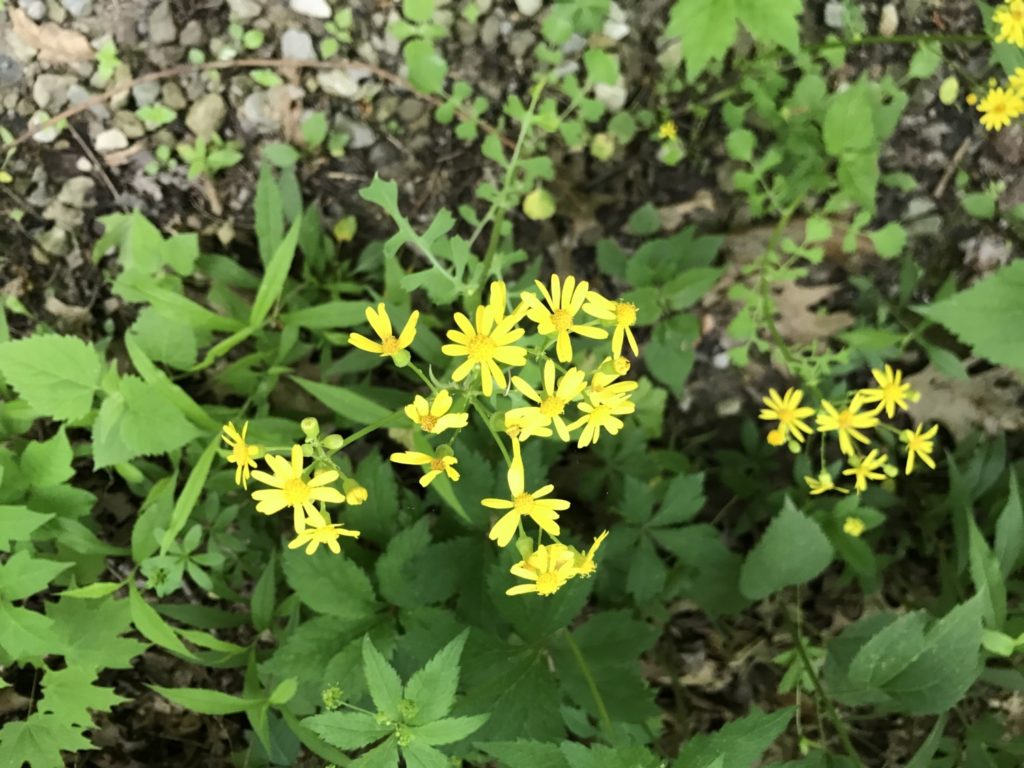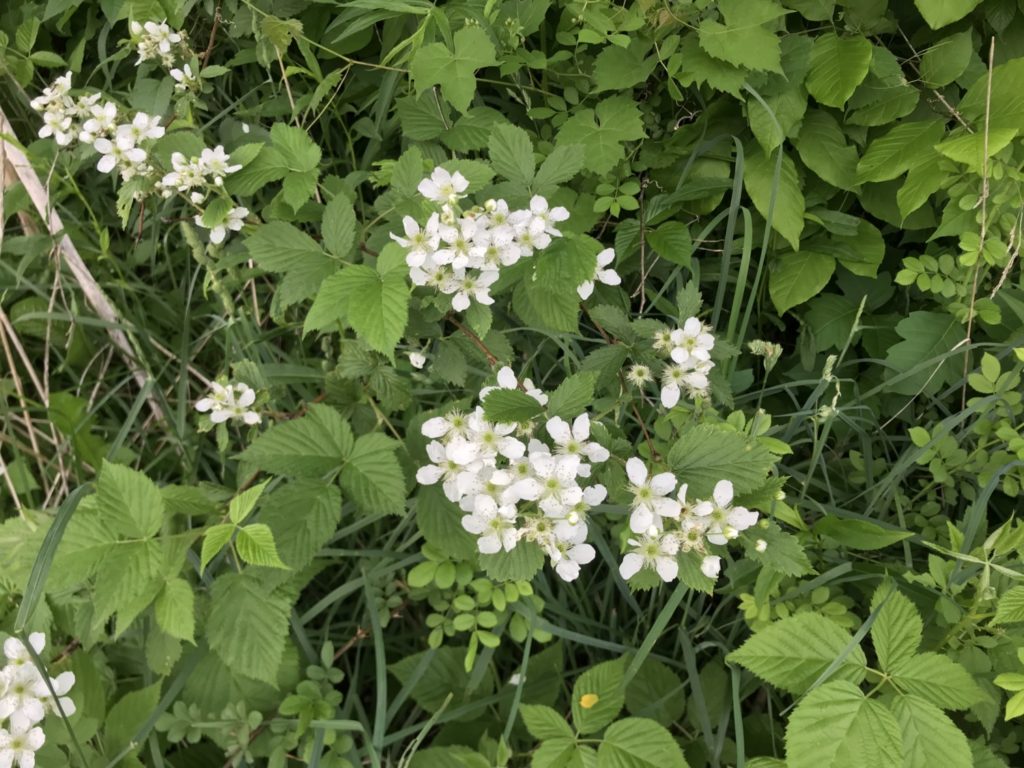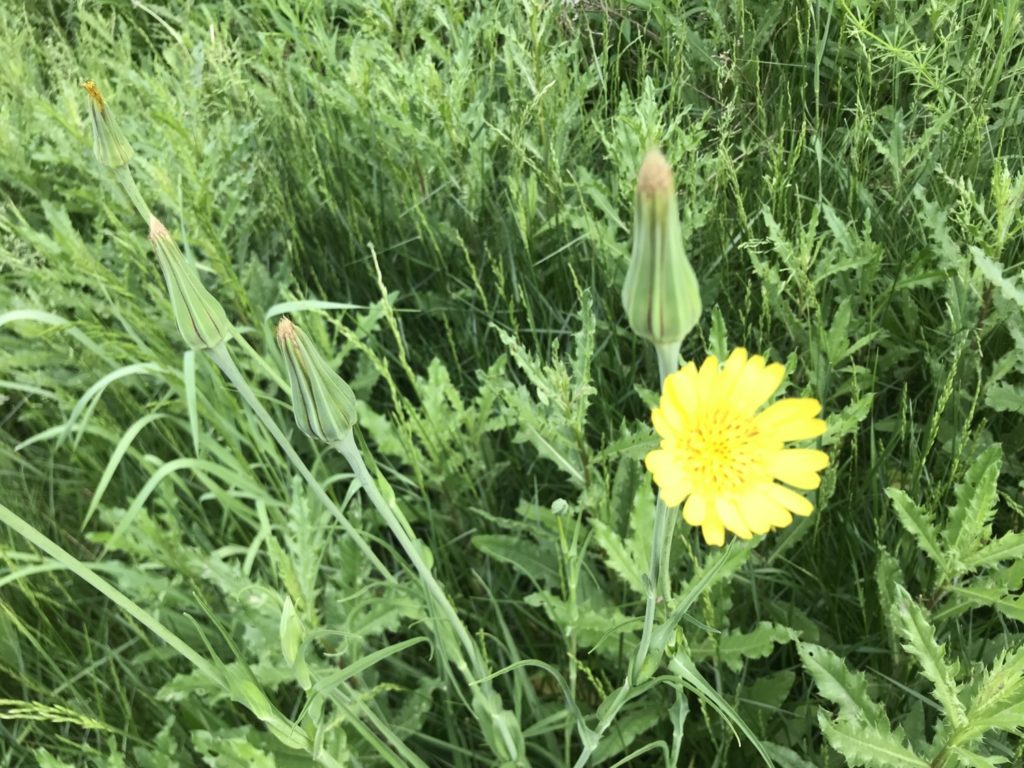On our recent evening with Pete and Cathy, we stopped to look at some beautiful wildflowers. Cathy mentioned that someone had told her they were phlox and she asked me if they were. I assured her they were, indeed, native phlox. Wild phlox look very different from the creeping phlox that are used for garden edging. The flowers are much bigger and the plants are very tall instead of being low to the ground.
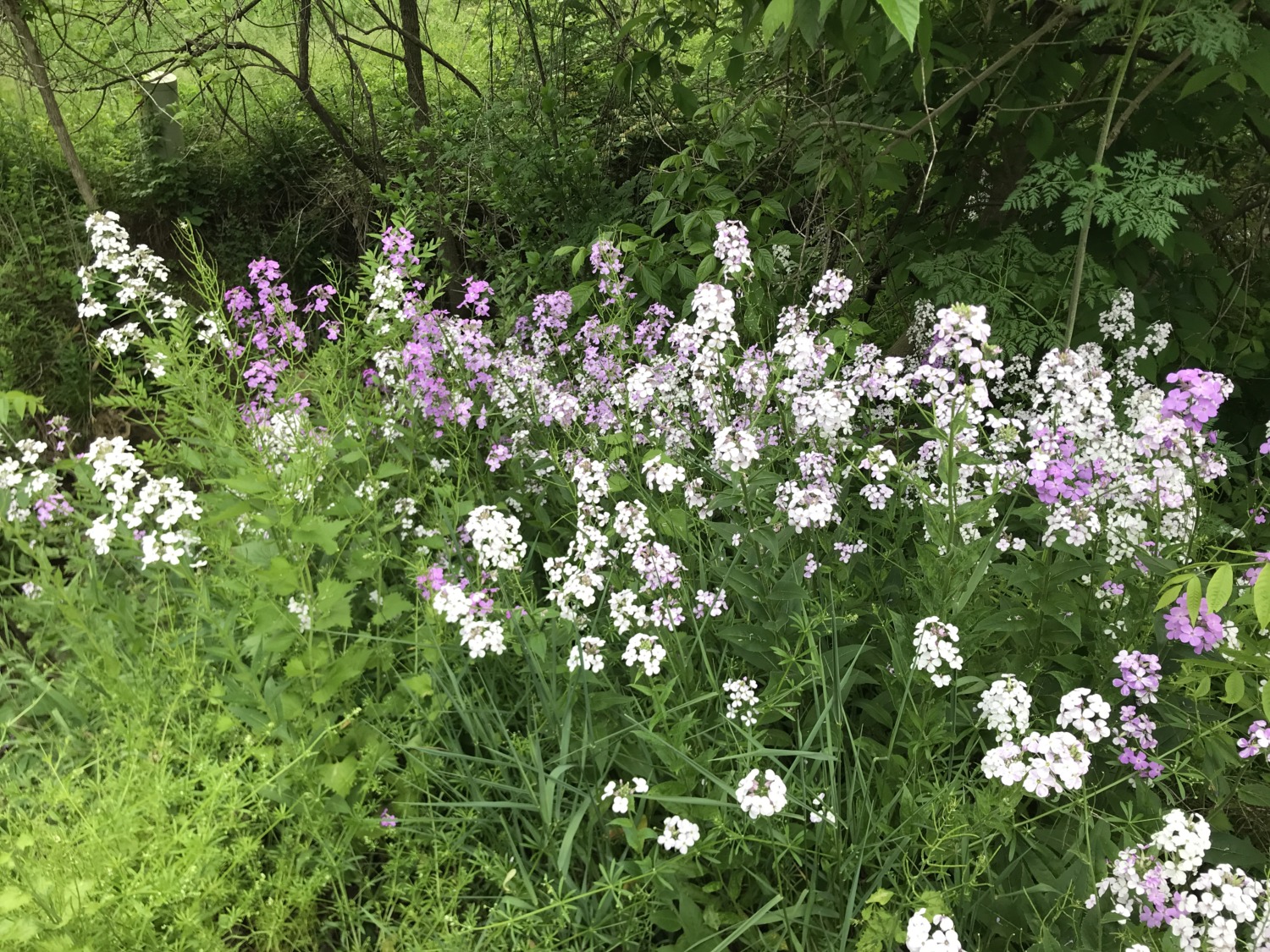
I was sure they were phlox. But, just to be 100% certain I was giving her the correct information, I pulled out my phone with my “Picture This” app. This is one of the few apps that I pay for. It costs $29.99 a year, but I love it because I can take a picture of any plant and it identifies it quickly. I am amazed how accurate it is. I snapped a picture of the thing I was sure was phlox and the “Picture This” app identified it as Dames Rocket. What?
Turns out that Dames Rocket is a wildly invasive false phlox. The only difference in the plant appearance is that Wild Phlox blossoms have five petals and Dames Rocket only has four. Otherwise the two plants are identical. My “Picture This” app identified the difference that my eye had not noticed. Since then I’ve been looking at the phlox around me and it turns out that most of it is really Dames Rocket. Wild phlox has almost disappeared because the Dames Rocket is so invasive.
The Dames Rocket is still beautiful and I’ve been learning to call it the correct name. I love seeing the wildflowers that abound in May and June in Ohio. They are everywhere. And I take all kinds of pictures of them with my phone camera and my “Picture This” app. That way I can enjoy them and know what they are called.
Although the honeysuckle is done in the park across the way, the wisteria is blooming and smells wonderful. The multiflora roses are also blooming, another invasive species. There is a little white daisy-ish flower that I can never remember the name of, but my “Picture This” app identified it as Philadelphia fleabane. No wonder I can’t remember the name.
Beaked cornsalad is another pretty little white flower with an unusual name. Wikipedia says it has no known uses. Being pretty isn’t enough for Wikipedia. A common wildflower in the area is meadow salsify, but I’ve also been seeing some western salsify in the woods. Meadow salsify and butterweed are often seen in the spring in untilled farm fields. Both are yellow and hard to tell apart when you are driving by a field. Butterweed, however, is toxic to humans, so don’t try to add it to a salad, even though it sounds like something you can eat.
I recently saw small white flowers and I thought at first that they were multiflora roses. They even had thorns. But, after looking closer, I could see that they were common blackberry. I marked the location, hoping that I can grab some of the fruit when it is ripe in August. Wild blackberries are delicious!
I love knowing the names of the plants around me. My “Picture This” app has been very helpful in this and is worth the money I pay every year. When we were helping John and Jackie in their yard, Jackie asked me to find out what several different plants were. I was able to identify them so we could decide whether or not to pull them up or let them grow. Arrowood viburnum definitely staying. Virginia stickseed needs to go. Ohio spiderwort is a keeper. Ground ivy is not. The Reed Canary Grass stayed in one bed but was removed from another where Jackie is planting grass seed.
I even use the “Picture This” app in the landscaping around my house. Tom kept calling one plant groundcover and saying that I should keep it. When I identified it as Common Three-seeded Mercury, I knew it needed to come out. That is a weed that spreads like a weed! And it is only ground-cover sized for a little while.
What are your favorite wildflowers at this time of year? Do you know their names or do you just enjoy their beauty?

